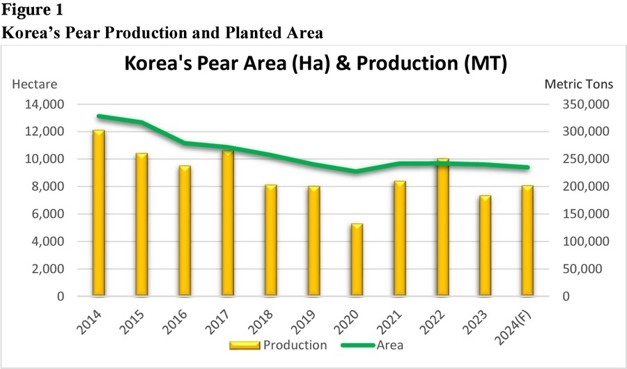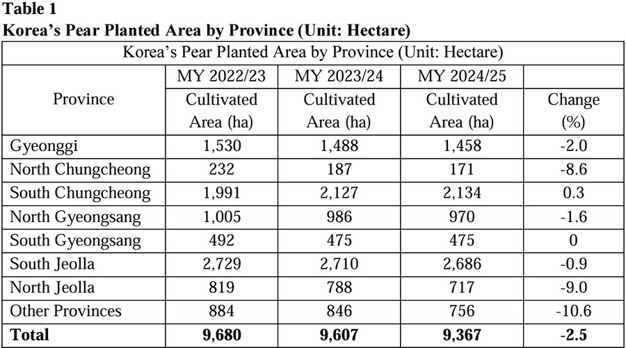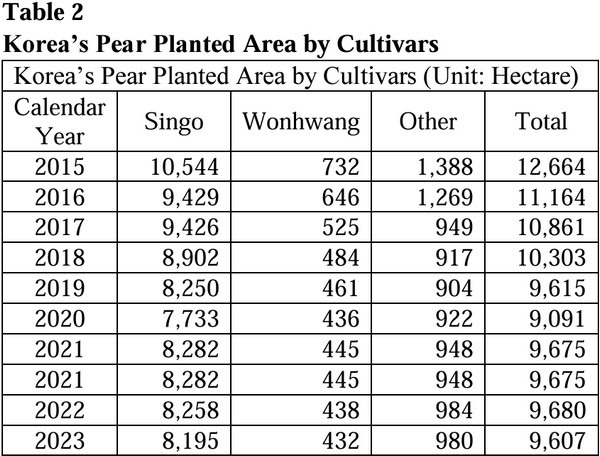Korea's fresh pear production is projected to rise by 10.2 percent to 202,000 metric tons (MT) in marketing year (MY) 2024/25, helped by favorable weather and lower incidences of diseases and pests compared to the previous year. This production level is close to the five-year average, with further yield recovery hampered by weather challenges (heat, tropical nights, etc.) that caused sunburn, cracking, and reduced fruit size. Price inflation remained high for fresh fruit through much of 2024, but has stabilized since the harvest of pears and other domestic fruit. Exports are set to expand by 33 percent, reaching 25,000 metric tons, primarily due to higher production levels. Production in MY 2023/24 has been revised down to 183,300 MT based on official data confirming the full extent of yield losses from adverse weather throughout 2023.

In marketing year (MY) 2024/25 (July – June), Korean fresh pear production is projected to increase by 10.2 percent to 202,000 metric tons (MT), up from 184,000 MT in MY 2023/24. This aligns closely with the five-year average of 198,000 MT. Despite a 2.5 percent decline in fresh pear cultivation area, yields recovered significantly from last year on improved weather conditions during the flowering, growing, and harvest periods, along with lower incidences of fruit disease and pests. Especially as a result of the higher fruit set from favorable weather, the yield of fresh pears in MY 2024/25 is projected to increase by 12.7 percent, reaching 2,150 kg per 0.1 hectare (ha), compared to 1,913 kg in MY 2023/24.

In 2024, the growing conditions for Korean sand pears were generally favorable compared to the previous marketing year, when the crop suffered extensive damage from adverse weather conditions such as spring frost during the flowering season in April and typhoons during the harvest season. Although the incidence of pests and diseases decreased compared to the previous year, 2024 saw high temperatures and low rainfall in August and September, which hindered fruit growth, and led to issues such as fruit sunburn and cracking. As a result, overall fresh pear production is expected to barely reach the five-year average production level.

Additionally, the overall fruit size in MY 2024/25 is projected to be smaller, as the prolonged summer heat wave and a record number of "tropical nights" limited fruit growth. Tropical nights occur when nighttime temperatures remain above 25 degrees Celsius. In 2024, Korea experienced the highest total number of tropical nights on record, as well as the longest streak of consecutive tropical nights, which lasted into early September.
To view the full report, click here.
For more information:
USDA
Tel: +1 (202) 720-2791
Email: [email protected]
www.usda.gov
